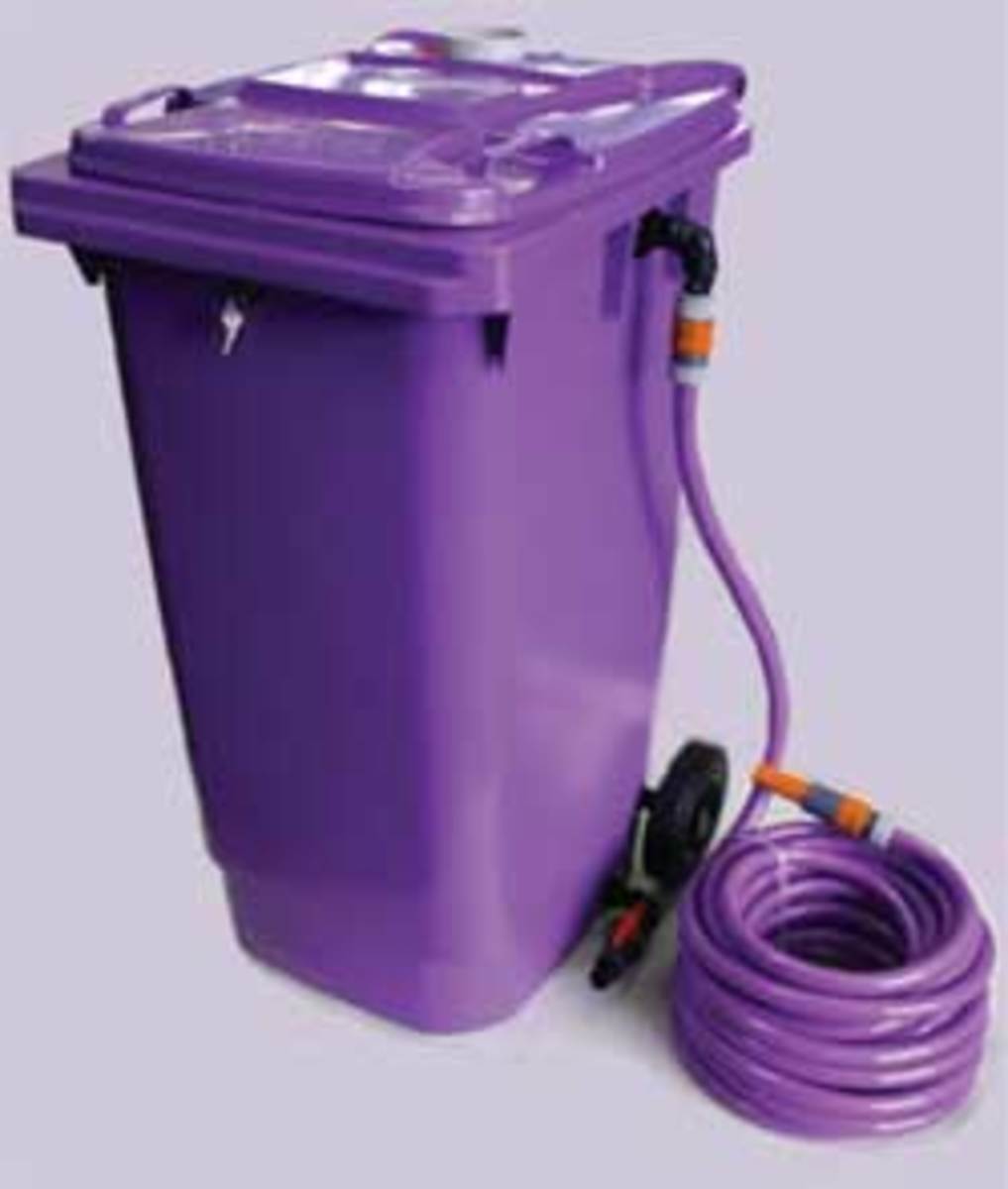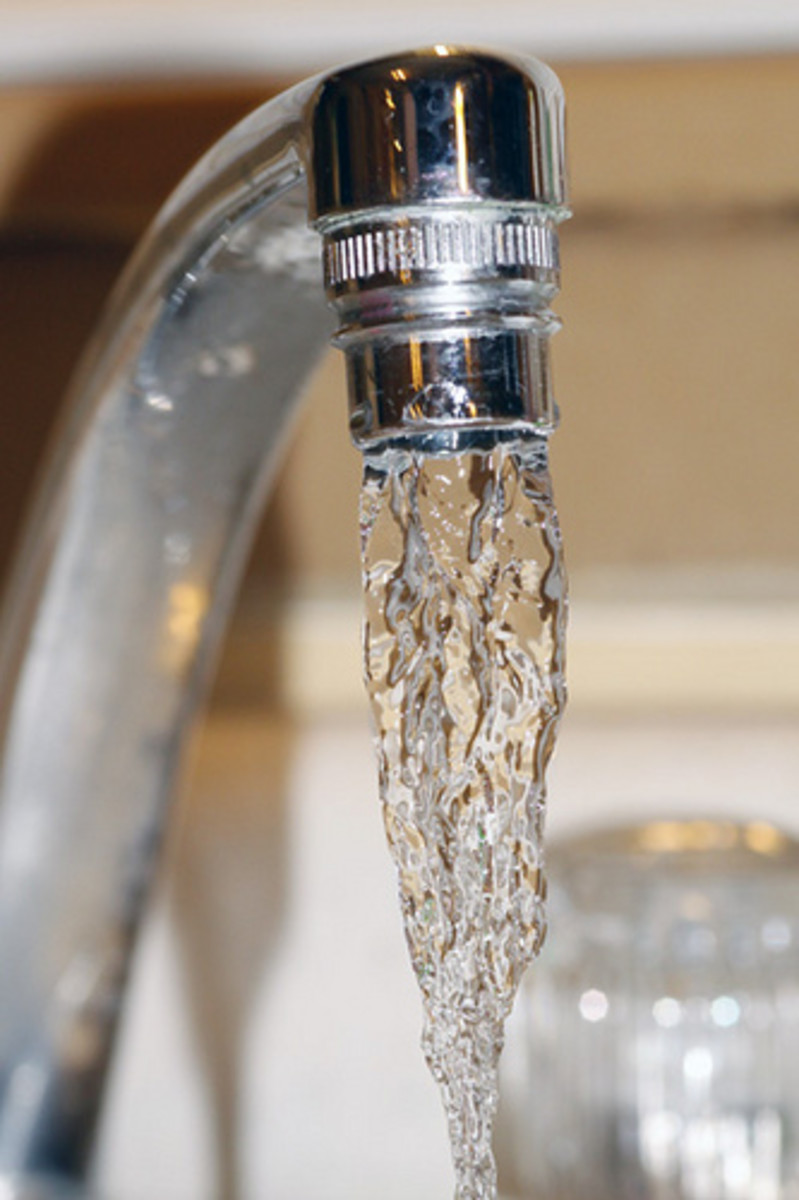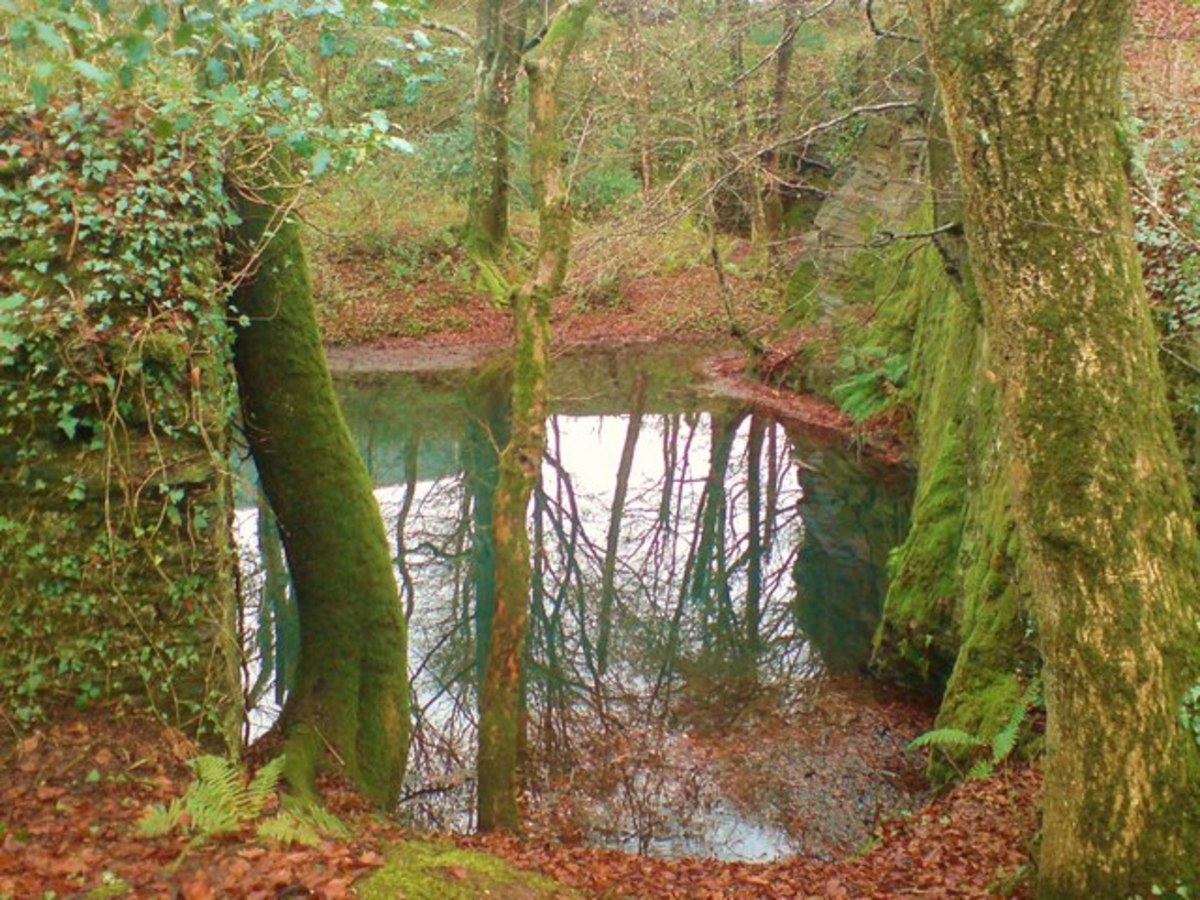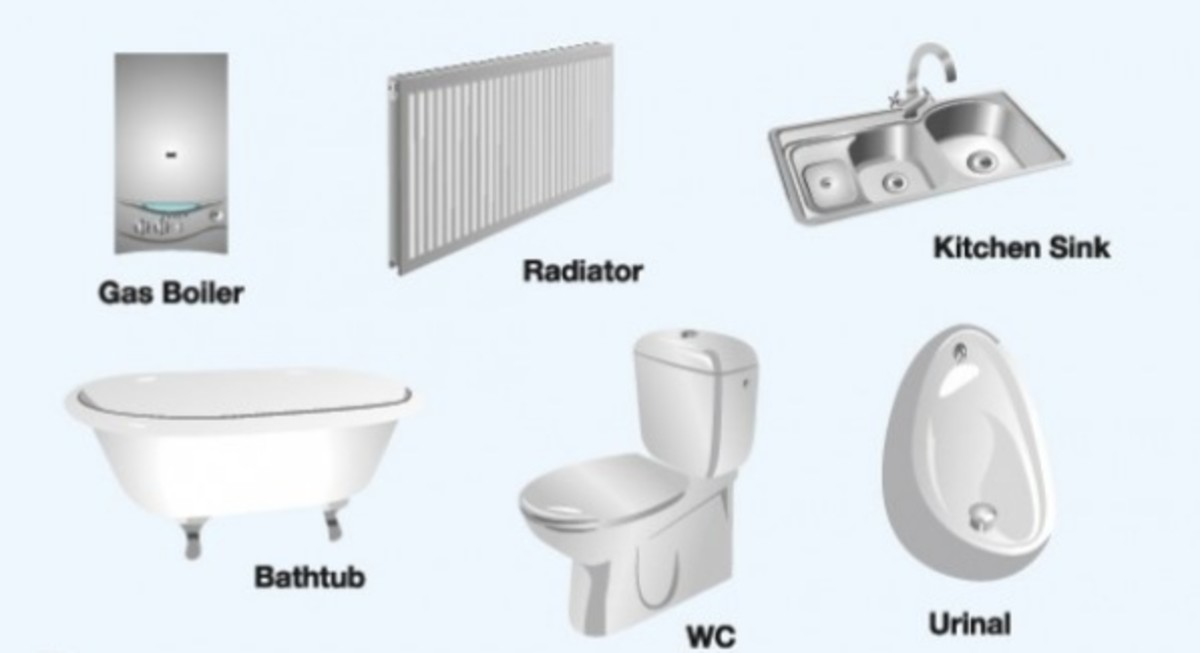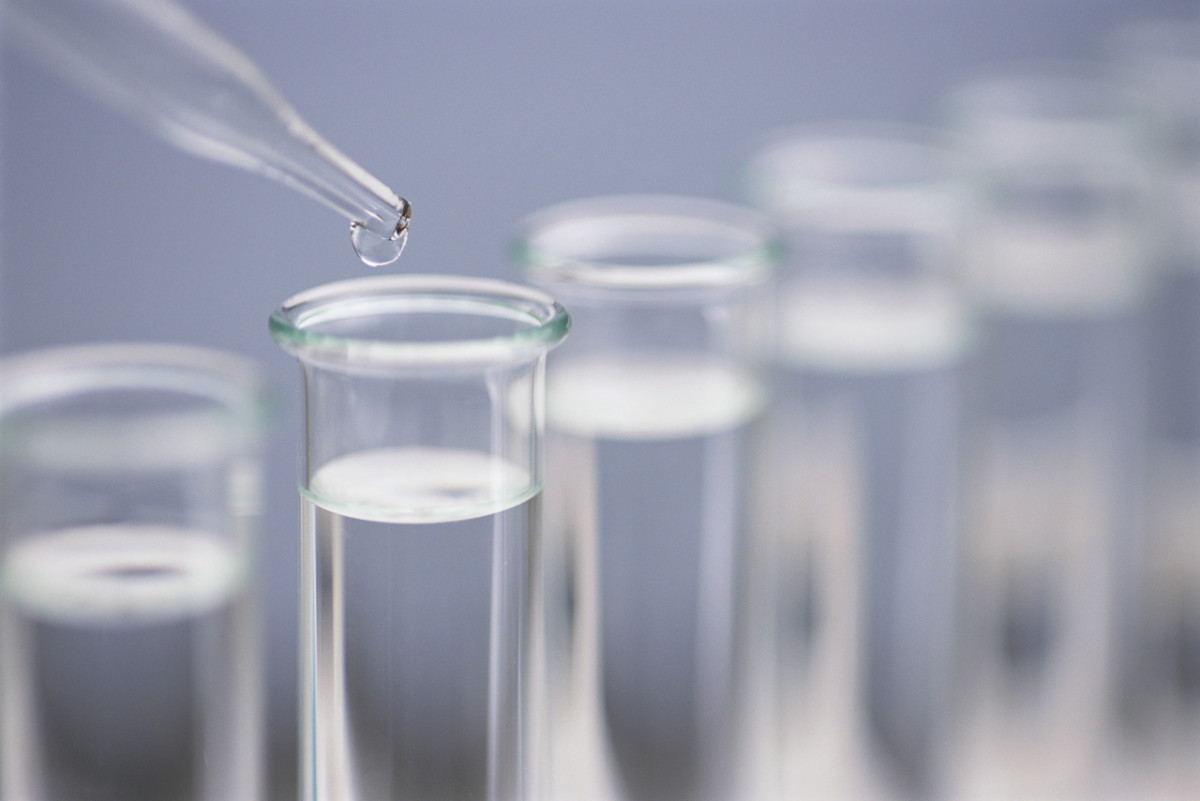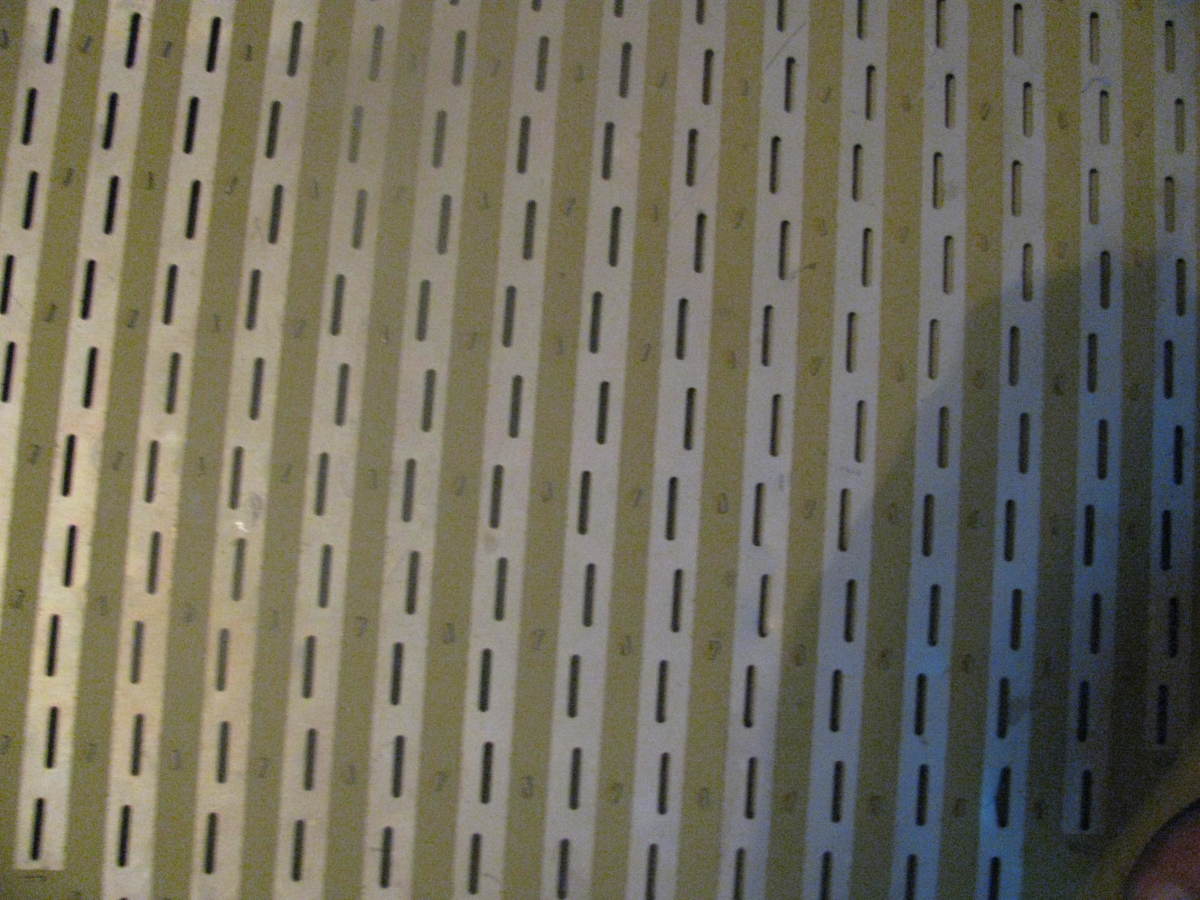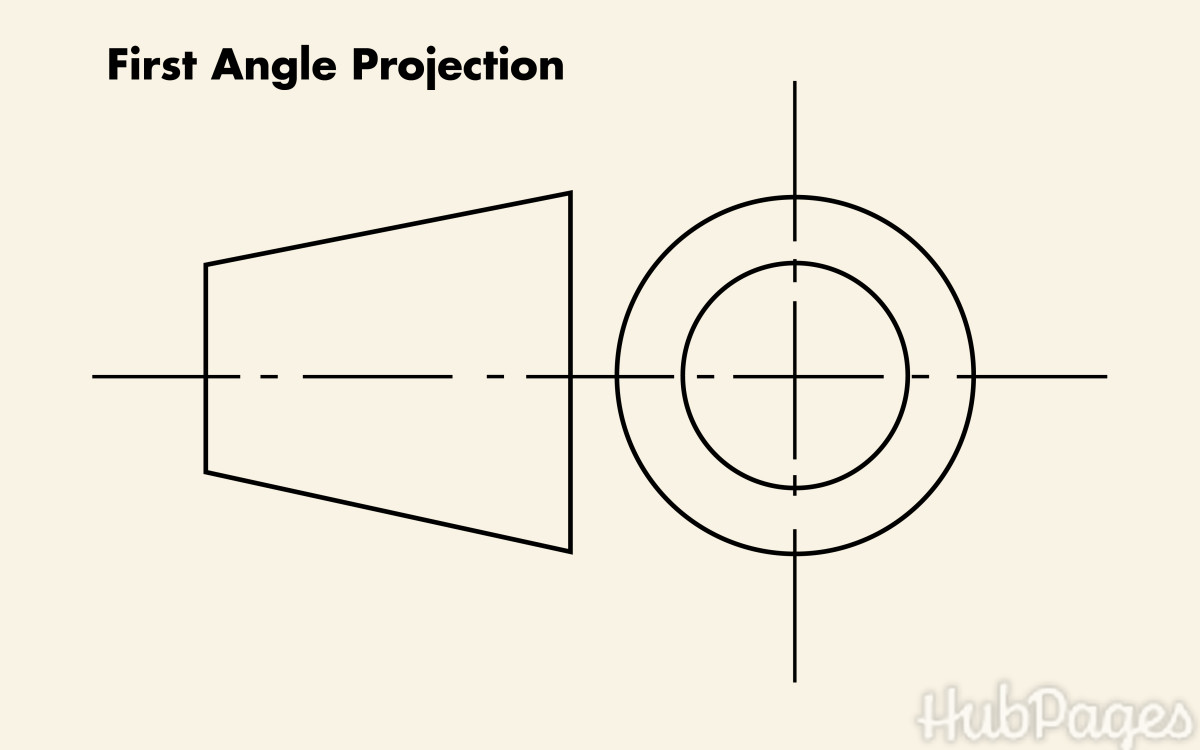Getting off the Grid - What you need to know about grey water
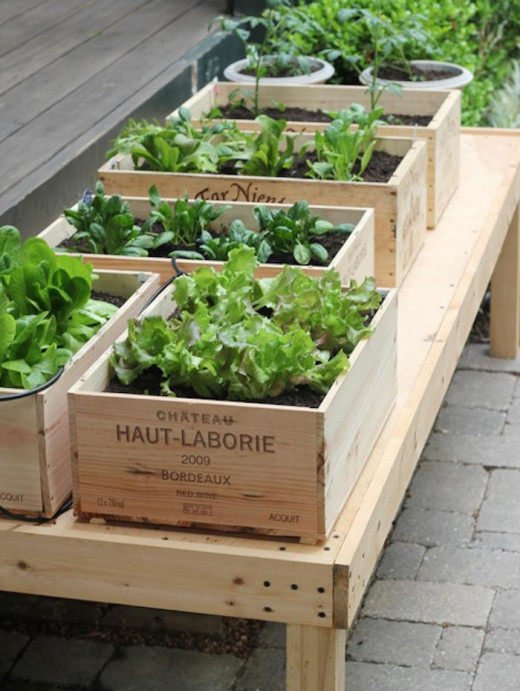
I believe that we may live to see the day when water is the new oil - a commodity that people, communities and countries may eventually fight over. Thus it is critical for us to be wise with our use of water and smart about what we do with used water and a part of that is to learn how we, as individuals and small businesses, can recycle "grey water" (aka "gray water").
There are 3 kinds of water in our daily lives: white water or "potable" water which is water that is safe to drink; "grey" water which is the water generated from activities such as dish washing, showering, clothes washing, and similar activities; and "black" water which is water that comes from toilets and/or contains human or animal waste. http://en.wikipedia.org/wiki/Greywater
For most people, potable water comes from the local water and sewer department which also deals with waste water, whether it is grey water or black water. And every month, or every quarter, you pay for that. But ask yourself, what would you do if some natural disaster or political upheaval made potable water unavailable? Having lived through several major hurricanes in South Florida, I can tell you from personal experience that you don't realize how quickly you will miss water when you cannot simply turn on the sink faucet and get a glass of water. The average person will prepare for a week without water in the face of an impeding natural disaster that might interrupt the flow of potable water. But then what?
Following Hurricane Andrew, my community was without drinking water for 10 days. Following Hurricane Wilma, about the same amount of time. Living without electricity, cable and phone was a snap compared to trying to live without drinking water. It is stunning how quickly that bottled water flies off the shelves at your local supermarket when the supply of water from the utility water ceases. But we had communities that were without potable water for months after Hurricane Andrew. How do you survive without drinking water?
Think it can't happen?
One of the most eye-opening movies I ever saw was Three Days of the Condor from the book, Six Days of the Condor by James Grady. This political thriller was directed by the late Sydney Pollack and had a great cast, including Robert Redford. At the end when Redford's character, Turner, confronts Cliff Robertson's character (Higgins), they have this exchange:
"Turner: Boy, what is it with you people? You think not getting caught in a lie is the same thing as telling the truth?
Higgins: No. It's simple economics. Today it's oil, right? In ten or fifteen years, food. Plutonium. And maybe even sooner. Now, what do you think the people are gonna want us to do then ?
Turner: Ask them.
Higgins: Not now — then! Ask 'em when they're running out. Ask 'em when there's no heat in their homes and they're cold. Ask 'em when their engines stop. Ask 'em when people who have never known hunger start going hungry. You wanna know something? They won't want us to ask 'em. They'll just want us to get it for 'em!" http://en.wikiquote.org/wiki/Three_Days_of_the_Condor
I see a lot of similarities between what happened in that movie and what is happening today. In 1990, Florida and Alabama filed suit against the State of Georgia and the Army Corps of Engineers in a dispute over the amount of fresh water that Georgia was siphoning off of water from Lake Lanier outside of Atlanta, which was created in 1938 by the Army Corps when it built the Buford Dam to generate hydro-electric power. In January of 2012, the United States Supreme Court refused to even hear the suit, leaving the parties/States still at odds over claims that Georgia takes too much for its citizens, and Florida and Alabama need more for theirs, of the fresh water that flows through Lake Lanier south through the three States.
Think of the implications to life as we now know it if our drinking water supply were to suddenly dry up or cease to flow.
How can we as individuals protect ourselves?
The optimal solution would be if every homeowner and business had access to an ample supply of clean well-water, lake water or river water. But that's not the case.
Thus we need to find a way to reduce our consumption of potable water and/or increase our ability to capture and clean rainwater. The easiest way to reduce our consumption is to learn to re-use grey water. Estimates are that we could reduce water consumption by 30% if every household could effectively re-use grey water and that would be a great start.
Re-using Grey Water in the House
There are 4 sources of grey water in most homes: sinks (bathroom, kitchen, laundry room), showers/tubs, dishwashers, clothes washers. For the moment, we will put aside a discussion of rainwater runoff from the roof or collected in rain barrels or cisterns.
Products that enable the average small business or homeowner to re-use grey water are already on the market. For example, there are toilets that have been modified to use grey water generated from the bathroom sink.
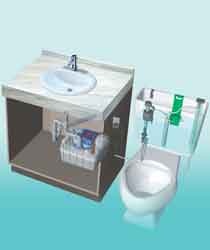
As you can see, this is a relatively straight-forward application taking water from the sink, putting it in a storage tank under the sink and then using it via the supply line to flush the toilet. It's not a stretch to envision recycling water exactly the same way from the bathroom shower/tub to the bathroom toilet.
Converting Grey Water to Drinking Water
In order to convert grey water into drinking water, the contaminants/micro-organisms must be either killed or filtered out. Contaminants include microscopic worms, protozoa, viruses, bacteria, and chemicals, which if consumed by humans, would create serious health issues.
Killing the micro-organisms in water can be done by chemical treatment, which is essentially what your local water department does, pasteurization, sterilization, or filtration. The difference between pasteurization and sterilization is that in pasteurization, only those organisms that are harmful for human consumption are killed and in sterilization all organisms in the water are killed.
Filtration systems can do the job of converting water of unknown drinking quality into potable water. Those systems range from very primitive, slow systems to systems that efficiently and effectively filter out harmful contaminants as seen in the videos below.
Survivalist/Emergency Water Filter
BioSand Water Filter
Water Purification Through Heat
As stated, there is a difference between sterilizing water and pasteurizing water. What is necessary is pasteurizing the water so that the harmful organisms are killed off through heat. But heat requires the expenditure of energy unless there is another renewable source, which brings us to the obvious source of heat - solar energy.
There are a number of ways that water can be heated through solar energy to a sufficiently high temperature for a sufficiently long period of time to kill off the harmful organisms. The chart below is helpful to understand the temperatures which need to be reached in order to render the grey water safe to drink. (If household grey water is being used, you should also ensure that you have a filtration system that will filter out soap and similar chemicals which are normally used in showers, sinks, and clothes washing activities.)
A key distinction, according to the research, is that sterilization requires that the water be maintained at boiling temperature for 20 minutes to ensure all organisms have been killed. Pasteurization requires that the required temperature simply be reached and maintained for 5 minutes thereby killing 95% of the harmful organisms and the organisms will continue to be killed even as the water is cooled from the highest temperature recommended in the chart, or 149 degrees Farenheit.
Temperatures necessary to kill harmful contaminants in water
Microbe/Killed Rapidly At Temperature:
Worms, Protozoa cysts (Giardia, Cryptosporidium, Entamoeba)/55°C (131°F)
Bacteria (V. cholerae, E. coli, Shigella, Salmonella typhi), Rotavirus/60°C (140°F)
Hepatitis A virus 65°C/(149°F)
(Significant inactivation of these microbes actually starts at about 5°C (9°F) below these temperatures, although it may take a couple of minutes at the lower temperature to obtain 90 percent inactivation.)
(Chart courtesy of
Since heating uses energy, to the extent that the purification/pasteurization process can be accomplished with a renewable source of energy, the process will not use up valuable resources. Solar heating is the natural solution to the problem.
Building in Passive Solar as a means of purification
One of the unexpected finds of the research I did recently on solar energy to run a house was a passive solar system that uses thick glass tubes incorporated into the exterior walls of the building (sometimes referred to as the building "envelope") through which grey water is diverted. The sun heats up the water in the glass tubes which then transfers that heat to the inside of the house on a cold day, and on a hot day, the water can help to cool the interior by pulling heat from the inside of the house and transferring it outside via a process known as "thermal exchange". Since it would make no sense to run drinking water through the glass tubes, the designers used grey water diverted from the various sources in the house and from run-off from the roof to run through. By incorporating certain bio-filters like the ones above, the water in the glass tubes was heated by the sun, destroying much of the bad organisms in the water with the remainder being filtered out thus converting grey water to potable/drinking water.
Using Passive Solar to Purify Grey Water
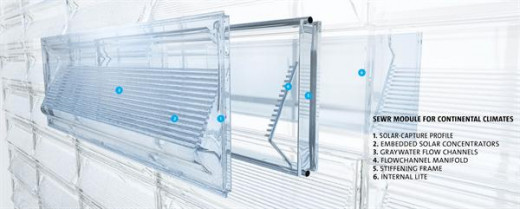
This type of a system could be incorporated into new construction but also could be installed in existing homes via a retro-fit of the home. Placing the glass tubing/solar collection tubes in strategic locations could also allow filtered sunlight to enter the building/house to reduce electric lights used during the day.
An added benefit of this type of system is that it could be tied into the hot water supply system to provide solar hot water for showering, clothes washing, and dish washing.
That is not to say that using solar energy to generate hot water needs to be high-tech. Frankly the original "Urban Homesteaders", the Dervaes Family in California, have been heating water for showers for nearly a decade using a coiled black garden hose to heat the water with sunlight. See their solution below and take some time to read their webpages/blog about conservation of water on their property. http://urbanhomestead.org/about
Low Tech Solution to Hot Water Needs
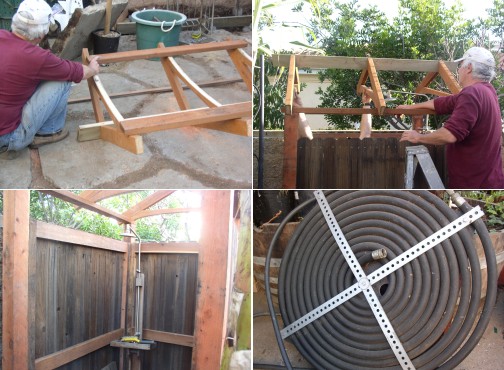
Other Uses for Grey Water
Untreated grey water can, in most instances, be used to water your lawn, flower gardens, and in most instances, your vegetable garden. The water should not go to waste: rather it should go back into the ground on your property to nourish the trees and plants so that treated, potable drinking water is not used for these purposes when there is no good reason for it.
To Be Continued
In my next hub, I will address collection of water from roofs and other water run-off sites on your property as well as methods to filter pond water to make it clean enough to drink or sustain fish that would be of food quality, another two-fer. http://en.wikipedia.org/wiki/Organisms_used_in_water_purification

